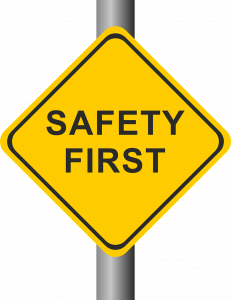8.3 HRM-Related Legislation: Part One
Here we will take a look at some of the most common pieces of employment legislation that will impact your organization from a people perspective. Remember that you should be in contact with your Human Resources representative when questions or concerns arise in any of these areas as they can provide immediate guidance and coaching. In the absence of HRM, you can contact an Employment Lawyer to answer your questions.
Employment Standards

The purpose of Employment Standards Legislation is to provide employers with the minimum worker requirements in areas such as:
- Hours of Work and Overtime
- Wages
- Notice of Termination of Employment and Severance Pay
- Public Holidays
- Vacation Time and Vacation Pay
Operations Manager Toolkit
Did You Know?
Legislative Update
It is interesting to note one of the latest updates to the Employment Standards Legislation includes “Right to Disconnect” wording. Employers with more than 25 workers are required to establish a written workplace policy. The focus of this policy is the ability for workers to disconnect from their workplace e-mail, meetings, phone calls, etc. in order to allow the individual to be free from the workplace outside of their work hours. This legislative change is meant to assist workers with their work-life balance. The legislation defines the right to disconnect as “… not engaging in work-related communications, including emails, telephone calls, video calls or the sending or reviewing of other messages, so as to be free from the performance of work .”[1]
Occupational Health and Safety

Keeping workers, visitors, and contractors safe is a basic responsibility of every organization. In Operations Management, you may have workers that report directly to you. As such, you are directly responsible for their safety in the workplace. As safety is such an important part of your role, we take a close look at the following safety topics later in this text:
- Health and Safety Legislation (Chapter 10)
- WHMIS 2015 (Chapter 11)
- Hazard Recognition, Assessment and Controls (Chapter 12)
- Incident Investigations (Chapter 13)
- Disability Management and Return-to-Work (Chapter 14)
Operations Manager Toolkit
Did You Know ?
Are you familiar with the “workplace postings” that are required by law in Ontario? Your workplace needs to ensure you have the necessary posters and information available and posted in an open area that can be viewed by your employees at all times. Some of these mandatory posters and information include a copy of the Occupational Health and Safety Act, a list containing the names/locations of the health and safety representative/members of the Joint Health and Safety Committee and a copy of your workplace safety policy.
Labour Relations

If you work in a unionized workplace, you will be responsible for working within the parameters of the Collective Agreement that has been established between the management team and the union.
Did You Know?
If you are wondering what types of topics the Ontario Labour Relations Board can review, they include requests for union certification, union de-certification, and accusations of unfair labour practices to name a few.
Operations Manager Toolkit
Human Rights

It is important for employers to understand that the Ontario Human Rights Code is legislation that provides for an individual’s opportunities without discrimination and equal rights. In Ontario, there are five protected social areas including:
- Employment
- Housing
- Goods, services and facilities
- Contracts
- Membership in trade and vocational associations
Specifically, the Ontario Human Rights Code (OHRC) details protected grounds including:
- Race
- Ancestry
- Place of origin
- Colour
- Ethnic origin
- Citizenship
- Creed
- Sex
- Sexual orientation
- Gender identity
- Gender expression
- Age
- Marital status
- Family status
- Disability
Did You Know?
When it comes to Human Rights in the workplace, inaction by a company can be to blame for an investigation and possible charge as noted in the following scenario. “Example: Two women suddenly quit. It is common knowledge that they left because of sexual harassment by their manager. The employer does not investigate the potential existence of sexual harassment and takes no steps to ensure future compliance with the Code or address the situation between the women and manager. If either of the women files a Human Rights claim, or if other employees later face discriminatory treatment, the lack of action by the organization and its senior employees would be considered.”[2]
- Working for Workers Act, 2021, S.O. 2021, c. 35. - Bill 27. (2021). https://www.ontario.ca/laws/statute/s21035 ↵
- Ontario Human Rights Commission. (2008). Human Rights at Work (3rd ed.). https://www.ohrc.on.ca/en/iv-human-rights-issues-all-stages-employment/12-resolving-human-rights-issues-workplace#:~:text=Example%3A%20An%20employee%20complains%20to,when%20he%20raised%20his%20concerns ↵


